Automatic CPU Overclocking:
MSI’s OC Genie 4 automatic overclocking tool can only be configured via the UEFI BIOS, not via an onboard button that MSI typically implements on its boards. Cost reductions lead to the onboard OC Genie button being left out of the Z87-G43 Gaming's feature set. I find it unlikely that many users will miss its functionality; clicking the virtual button via the BIOS isn't particularly difficult.
The OC Genie 4 setting applied a 4.00GHz CPU frequency to our 4770K and opted for a 1.100V VCore. Other settings remaining untouched.
Our memory operated at its rated frequency of 2133MHz, but OC Genie 4 had automatically applied the secondary XMP profile which used a 50mV higher DRAM voltage. This didn’t present an issue for us, but it may for users of memory kits with XMP profiles of different frequencies.
This is actually a fairly well-tuned setting for the 4770K as it provides a small clock speed boost, but does so with a reduction in the VCore level.
Unlike some of MSI's other OC Genie 4-equipped motherboards (the Z87M Gaming, for example), the Z87-G43 Gaming features a single automatic overclocking profile, not two. The excluded secondary profile, which typically operates at around the 4200MHz-mark (with voltages increased accordingly), may be missed by novice users who appreciate the simplicity of automatic speed boosts and want a good performance increase from their system.
The automatic overclock validation can be found here.
Manual CPU Overclocking:
To test the MSI Z87-G43 Gaming motherboard’s CPU overclocking potential, we first increased the CPU VCore to 1.325V, Cache voltage to 1.275V, and CPU Input Voltage to 1.900V. These settings represent levels which we would consider safe for 24/7 usage with a mid-range, or better, CPU cooler.
Once a novice user has figured out how to navigate the OC section of MSI's UEFI, overclocking should be straightforward. We altered three voltage settings to provide extra stability and boosted our 4770K's clock speed to 4.50GHz without hassle.
Although readouts in the BIOS showed that some voltage levels were higher than our desired settings, MSI’s Z87-G43 Gaming was happy to deliver our input levels in an OS environment. We didn’t need to fuss about with load-line calibration or offset voltages.
The ease of overclocking with the Z87-G43 Gaming motherboard is aided by Haswell's simplicity, and a stable BIOS implementation on MSI's part.
Voltage accuracy from the Z87-G43 Gaming was excellent. When Windows was loaded, the motherboard set our CPU VCore to within 1mV of what we set through the BIOS.
We pushed for stability at 4.6GHz, but as has been the case for every other Z87 motherboard that we have tested with our 4770K, a BSOD would quickly ruin our attempts.
Our 4.5GHz overclock validation can be viewed here.
 KitGuru KitGuru.net – Tech News | Hardware News | Hardware Reviews | IOS | Mobile | Gaming | Graphics Cards
KitGuru KitGuru.net – Tech News | Hardware News | Hardware Reviews | IOS | Mobile | Gaming | Graphics Cards
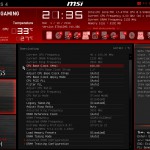
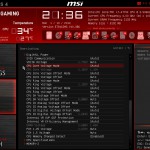
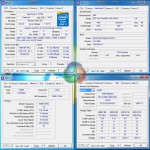
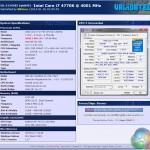


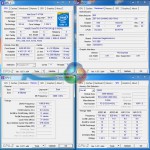


Thats one of the best value for money boards you can get, two of my friends have it, and it really is all you would ever need. Love it.
Have one already, fantastic board. I found though that some Corsair memory had boot problems with it if you populated all the slots…
I was about to purchase the G45 Gaming, but there was no stock in our local store by the time so I opted for this G43 Gaming. I’m so happy it did not let me down. I thought this is one of the best budget Z87 boards out there!
Is there a laptop version ?
abraham ortiz, this is a desktop motherboard. There is no laptop version.
“Built around MSI’s tried-and-tested Military Class 4 components” What a joke this is. First there is no ML STD anymore. It was replaced by IPC. Military falls under class 3 requirements. “Whereas Class 3 products demand continued high performance or performance-on-demand is critical and equipment downtime cannot be tolerated, the end use environment may be uncommonly harsh, and the equipment must function when required, such as life support or other critical systems” I am a certified IPC specialist, and can tell you that it does likely meet the class 3 military spec, BUT so does almost every other manufacturer.